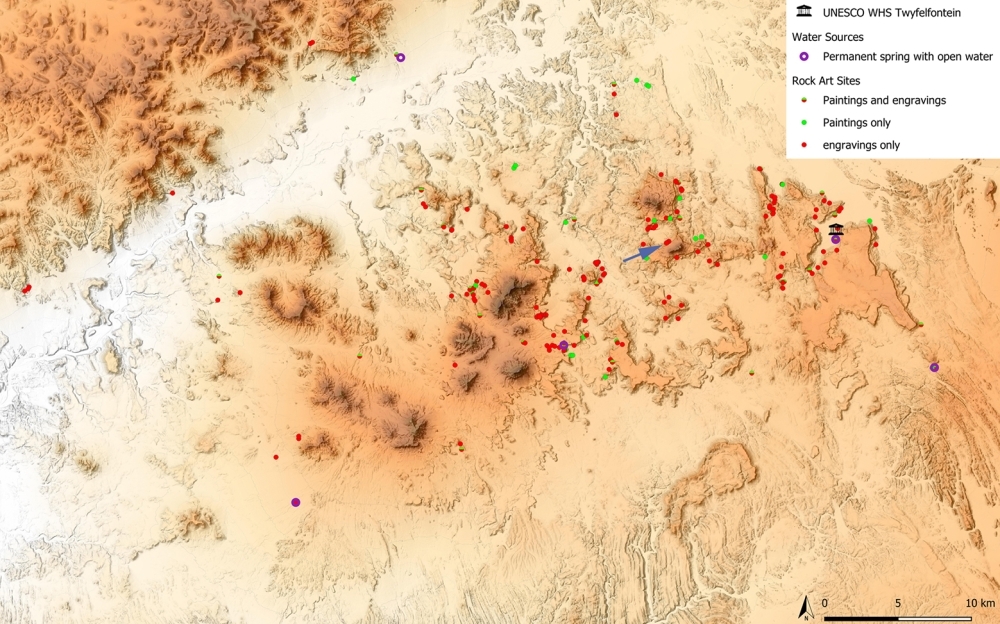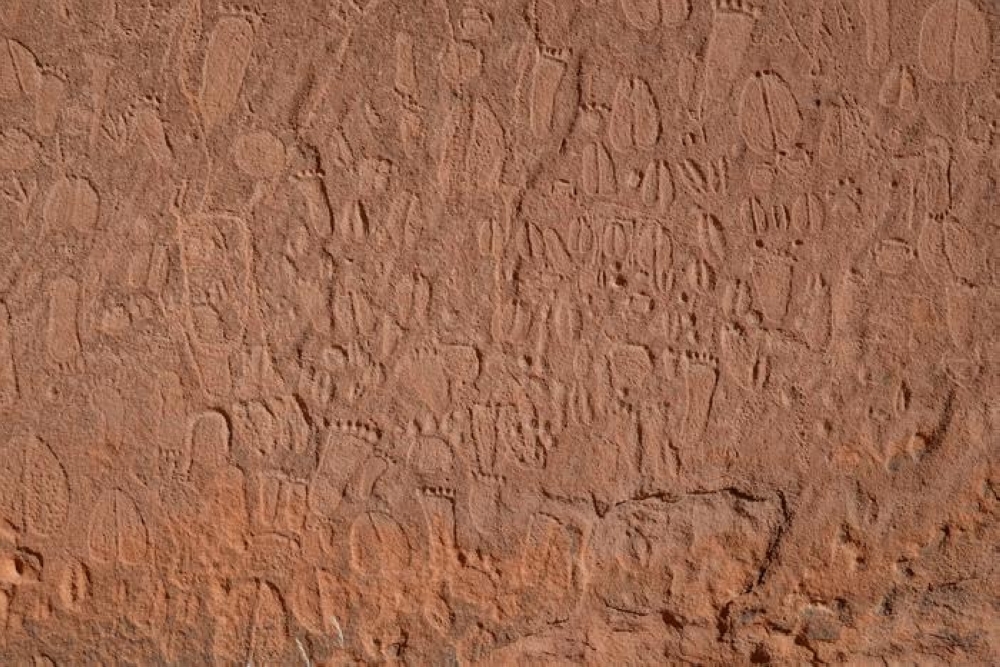San trackers decipher age-old rock art
Indigenous knowledge brings archaeological breakthrough
The study confirms that indigenous knowledge, with its exceptional insight into a variety of fields, has the ability to significantly advance archaeological research.
German archaeologists received help from San trackers from Tsumkwe from the Nyae Nyae Conservancy to make a breakthrough in studying Namibian rock etches in the Doro !Nawas mountains.
Thanks to the Ju/'hoansi hunters' indigenous knowledge, researchers were able to identify the animal species, sex, age and left or right leg in more than 90% of the rock art that was analyzed.
The engravings of especially animal tracks were found, made by people who lived as hunters and gatherers in the later Stone Age.
This is the first time researchers have used the knowledge of indigenous trackers to study rock art.
"Until now, researchers of rock art have overlooked the fact that tracks and footpaths must have been a rich source of information for the hunter-gatherers of the time, apart from having deeper, culture-specific connotations.
"In the recent research project, an attempt was made to bridge this gap. This involves indigenous trackers from the Kalahari being used to analyze the excavated animal and human tracks. The analysis was carried out in the central western parts of Namibia - in the Doro !nawas mountains, where more rock art has recently been discovered," said the researchers.
"The study confirms that indigenous knowledge, with its exceptional insight into a variety of fields, can significantly advance archaeological research," the researchers noted in their peer-reviewed research paper.
Footprints
"The people from the Stone Age maintained a tradition of engraving animal footprints in rocks - especially in footpaths that wild animals often used. In our opinion, the study found that the rock engravers purposefully included certain features in their rock art.
"They clearly chose to depict the footprints of certain animals - such as giraffes, white and black rhinos, kudus, springboks, warthogs, oryx, ostriches, duikers, bush pigs, leopards and zebras. They usually also included at least one bird - the tracks of guinea fowl, while the tracks of other animal species were not often depicted. . ." the researchers noted.
The researchers say rock artists made deliberate choices about the type of tracks they depicted. The tracks also generally run in a specific direction - not randomly, while the artists apparently preferred to engrave the tracks of younger male animals when it comes to wild boars or divers and older female animals when it comes to leopards or partridges.
The researchers say that the exact meaning and intention of rock art remain a mystery and that existing hypotheses do not offer satisfactory answers. Even the native trackers cannot fully analyze this mystery.
Other clues
However, the rock art gives archaeologists an idea of which animals previously existed in the area, which also suggests that the arid area must have been "wetter" earlier or received more rain.
The research article was published on 13 September in the scientific journal Plos One with the title "Animal tracks and human footprints in prehistoric hunter-gatherer rock art of the Doro !Nawas mountains (Namibia), analyzed by present-day indigenous tracking experts".
According to the researchers, rock art is found in various places in the world, but Namibia is one of the countries that is rich in it. – [email protected]
Thanks to the Ju/'hoansi hunters' indigenous knowledge, researchers were able to identify the animal species, sex, age and left or right leg in more than 90% of the rock art that was analyzed.
The engravings of especially animal tracks were found, made by people who lived as hunters and gatherers in the later Stone Age.
This is the first time researchers have used the knowledge of indigenous trackers to study rock art.
"Until now, researchers of rock art have overlooked the fact that tracks and footpaths must have been a rich source of information for the hunter-gatherers of the time, apart from having deeper, culture-specific connotations.
"In the recent research project, an attempt was made to bridge this gap. This involves indigenous trackers from the Kalahari being used to analyze the excavated animal and human tracks. The analysis was carried out in the central western parts of Namibia - in the Doro !nawas mountains, where more rock art has recently been discovered," said the researchers.
"The study confirms that indigenous knowledge, with its exceptional insight into a variety of fields, can significantly advance archaeological research," the researchers noted in their peer-reviewed research paper.
Footprints
"The people from the Stone Age maintained a tradition of engraving animal footprints in rocks - especially in footpaths that wild animals often used. In our opinion, the study found that the rock engravers purposefully included certain features in their rock art.
"They clearly chose to depict the footprints of certain animals - such as giraffes, white and black rhinos, kudus, springboks, warthogs, oryx, ostriches, duikers, bush pigs, leopards and zebras. They usually also included at least one bird - the tracks of guinea fowl, while the tracks of other animal species were not often depicted. . ." the researchers noted.
The researchers say rock artists made deliberate choices about the type of tracks they depicted. The tracks also generally run in a specific direction - not randomly, while the artists apparently preferred to engrave the tracks of younger male animals when it comes to wild boars or divers and older female animals when it comes to leopards or partridges.
The researchers say that the exact meaning and intention of rock art remain a mystery and that existing hypotheses do not offer satisfactory answers. Even the native trackers cannot fully analyze this mystery.
Other clues
However, the rock art gives archaeologists an idea of which animals previously existed in the area, which also suggests that the arid area must have been "wetter" earlier or received more rain.
The research article was published on 13 September in the scientific journal Plos One with the title "Animal tracks and human footprints in prehistoric hunter-gatherer rock art of the Doro !Nawas mountains (Namibia), analyzed by present-day indigenous tracking experts".
According to the researchers, rock art is found in various places in the world, but Namibia is one of the countries that is rich in it. – [email protected]







Kommentaar
Republikein
Geen kommentaar is op hierdie artikel gelaat nie